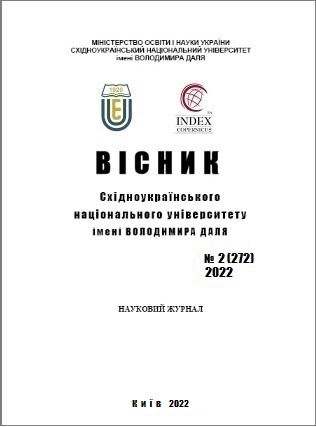Mathematical simulation of the deformation of the part material surface layer during its finishing and grinding processing with metal balls in the vibration polishing operation
DOI:
https://doi.org/10.33216/1998-7927-2022-272-2-46-51Keywords:
vibration polishing operation, polished metal balls, work hardening, deformation zone, ball motion speed, velocity field, velocity intensity, deformation intensityAbstract
It is noted that polished metal balls with a diameter of 4...6 mm, made for the ball bearing industry from 100Сr6 (DIN 17230-1980) steel, are used as a working medium in vibration polishing operations. The nature of the vibration polishing operation is described and it is indicated that the effect of surface cold working is created on the surface layer of the processed part. It is noted that such technological methods as blowing with shot, caulking and others are widely used to create work hardening. In this operation the metal polished balls, the hardness of which significantly exceeds the hardness of the material of the processed part, are used. It is known that work hardening is formed during plastic deformation of the part material surface layer. The plastic contact problem in the practice of vibration treatment has not yet been fully solved, but its partial solutions have been obtained. The purpose of the article is an attempt to determine the state of strain in the deformation zone under the condition of plastic contact between the metal ball of the working medium and the surface of the processed part. A mathematical model has been developed for determining the deformation of the part material surface layer. Deformation studies are conventionally accepted in a cylindrical coordinate system. The problem posed is solved using the general equations of continuum mechanics and the velocity field displacements. The depth of work hardening was determined from the dimensions of the plastic imprint. Also, using the slip line method, without taking into account friction forces, the zone of deformation propagation in the radial direction was established. The field of metal flow velocities in the deformation zone is established. The strain rates are determined, and the intensity of these rates during deformation in the metal of the processed part is established. It is assumed that the deformation zone varies in space and time. It has been established that the start time of deformation for each point of the processed part surface will have its own value. It is proved that the deformation zone can be limited by an elliptical surface. As a result, an expression in cylindrical coordinates is obtained. It allows one to determine the intensity of deformation of the processed part surface by metal balls at any time of the cycle of the vibration finishing and grinding processing.
References
1. Карташов И.Н., Шаинский М.Е., Власов В.А. Обработка деталей свободными абразивами в вибрирующих резервуарах. Киев: Вища школа, 1975. 188 с.
2. Бабичев А.П., Бабичев И.А. Основы вибрационной технологии. Ростов-на-Дону, 2008. 694 с.
3. Kundrák J., Morgan M., Mitsyk A.V., Fedorovich V.A. The effect of the shock wave of the oscillating working medium in a vibrating machine’s reservoir during a multi-energy fi-nishing-grinding vibration processing. The International Journal of Advanced Manufacturing Technology106, p. 4339 – 4353 (2020). https://doi.org/10.1007/s00170-019-04844-2
4. Мицык А.В., Федорович В.А. Развитие новых технологий вибрационной отделочно-зачистной и упрочняющей обработки деталей общемашиностроительного применения. Вісник НТУ «ХПІ». Серія: нові рішення в сучасних технологіях. Харків, НТУ «ХПІ», 2012. № 47 (953). С. 226 – 233.
5. Николаенко А.П. Формирование поверхности изделия при вибрационной обработке. Вібрації в техніці та те-хнологіях. 2010. № 2 (58). С. 167 – 181.
6. Носко П.Л., Калмиков М.О., Ніколаєнко А.П., Лубенсь-ка Л.М. Застосування вібраційної обробки для підви-щення якості виробів: монографія. CНУ ім. В. Даля. Луганськ: Ноулідж, 2009. 292 c.
7. Кроль О.С. Методы и процедуры динамики шпиндельных узлов: монография. Луганск: ВНУ им. В. Даля, 2014. 154 с.
8. Кроль О.С. Параметрическое моделирование металло-режущих станков и инструментов: монография. Лу-ганськ: СНУ ім. В. Даля, 2012. 116 с.
9. Калмиков М.О., Шумакова Т.О., Струтинський В.Б., Лубенська Л.М. Інструмент для обробки деталей віль-ними абразивами. Київ – Луганськ: «Ноулідж», 2010. 214 с.
10. Mamalis, A.G., Grabchenko, A.I., Mitsyk, A.V., Fedoro-vich, V.A., Kundrák, J. Mathematical simulation of motion of working medium at finishing – grinding treatment in the oscillating reservoir. The International Journal of Advanced Manufacturing Technology70, p. 263 – 276 (2014). https://doi.org/10.1007/s00170-013-5257-6
11. Алексеев Ю.Н., Борисевич В.К., Коваленко П.И. Теоретические исследования деформационного состояния при внедрении сферического индентора в полупространство. Импульсная технология обработки металлов давлением.Вып. 5. Харьков: ХАИ, 1975. с. 112 – 116.
12. Алексеев Ю.Н. Введение в теорию обработки металлов давлением, прокаткой и резанием. Харьков: ХГУ, 1969. 108 с.
13. Кудрявцев И.В. Основы выбора режима упрочняющего поверхностного наклепа ударным способом. Повышение долговечности деталей машин методом поверхностного наклепа.Вып. 108. Москва: Машиностроение, 1965. с. 6 – 35.

